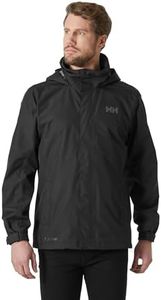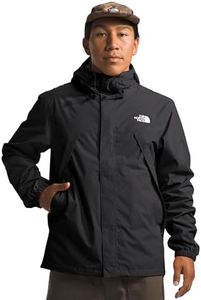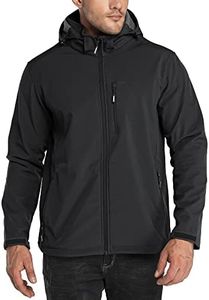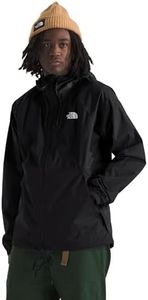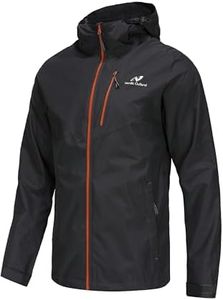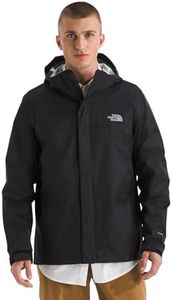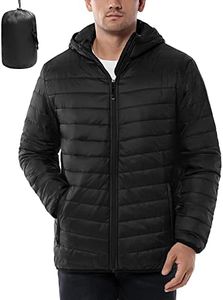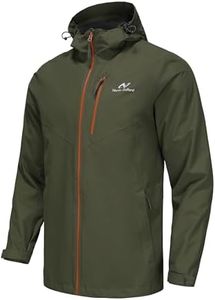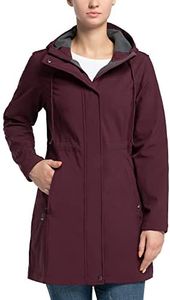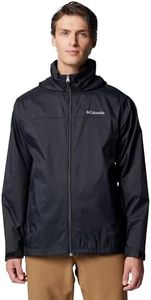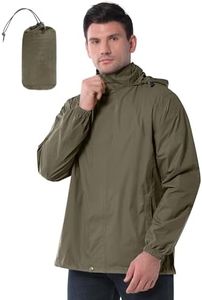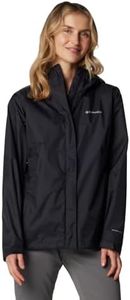We Use CookiesWe use cookies to enhance the security, performance,
functionality and for analytical and promotional activities. By continuing to browse this site you
are agreeing to our privacy policy
10 Best Waterproof Fishing Jacket
From leading brands and best sellers available on the web.Buying Guide for the Best Waterproof Fishing Jacket
Choosing the right waterproof fishing jacket is essential if you want to stay dry, comfortable, and focused while fishing in wet conditions. The right jacket protects you from rain, wind, and spray while still letting you move freely and keeping you comfortable for long hours outside. Before making a decision, it's helpful to understand the main features that affect performance and comfort. Your fishing environment, how you fish, and how often you’re out on the water should guide your choices.Waterproof RatingThe waterproof rating of a jacket indicates how well it can keep out water. It's usually shown in millimeters, which measures how much water pressure a fabric can handle before leaking. Basic jackets may offer ratings around 1,500-5,000mm and are good for light rain or brief showers, while ratings between 5,000-10,000mm can handle steady or moderate rain, making them suitable for most anglers. Heavy downpours or all-day storms call for jackets rated over 10,000mm. The more time you spend fishing in challenging, wet weather, the higher rating you'll want for reliable dryness.
BreathabilityBreathability refers to how well a jacket lets out sweat and moisture from inside while keeping rain out. Fabrics with higher breathability prevent you from feeling clammy or overheating when you’re active, which is especially important if you hike, cast frequently, or fish in warmer temperatures. Breathability is often measured by how many grams of vapor can pass through per square meter in 24 hours (g/m²/24h). Low breathability might make sense for stationary anglers in cold weather, while higher breathability is more comfortable if you're moving around or fishing in various climates.
Seams and ZippersThe way a jacket’s seams and zippers are designed affects its ability to stay truly waterproof. Fully taped or sealed seams mean water can’t sneak through stitching, while water-resistant or waterproof zippers prevent leaks in high-exposure spots. Some jackets have only critical seams taped, which is fine for light use, but for frequent, all-weather fishing, fully taped seams and waterproof zips are much better. If you often fish in pouring rain or splash-prone areas, prioritize jackets with these features.
Fit and MobilityThe fit of a jacket influences comfort and how easily you can move while fishing. Jackets come in various cuts—from slim/athletic to relaxed. A snug fit helps retain heat and is less likely to snag, but can be restrictive if you layer a lot or cast aggressively. A looser fit allows freedom and layering but may feel bulky. Try to imagine your usual fishing movements, what you wear underneath, and pick a fit that balances movement with insulation and comfort.
Hood DesignA good hood protects your head and neck from wind and rain without blocking your vision. Some hoods are adjustable with brims to keep rain off your face, while stowable or detachable hoods add versatility if you sometimes want to lose the extra bulk. If you spend hours in the rain, look for hoods that cinch tightly and move with your head, but if you rarely use a hood or fish in mild drizzle, a simple design may do.
Pockets and StorageThe number, size, and type of pockets on a fishing jacket can make a huge difference in day-to-day convenience. Large, waterproof pockets keep gear and hands dry, while zippered or fleece-lined options add security and warmth. More pockets are helpful if you carry lots of tackle or small tools, but too many can add weight and bulk. Consider your usual fishing style—do you want quick access for lures or fly boxes, or just a few protected spots for essentials?
Durability and MaterialThe jacket’s fabric and build quality affect how long it will last, especially in rough fishing conditions. Thicker, abrasion-resistant materials handle snags and heavy use better, while lighter fabrics may be softer and pack smaller. If you fish around brush or sharp gear, prioritize tough materials, but if you fish from a boat or mostly light environments, a lighter jacket may be preferable for comfort.
AdjustabilityFeatures like adjustable cuffs, hems, and waists help seal out water and customize the jacket fit to your body or layering. Adjustable cuffs prevent water from running down your sleeves, while cinch hems keep out wind and splash. These features are more critical in stormy or high-activity fishing, but less important if you mostly fish in gentle weather.
